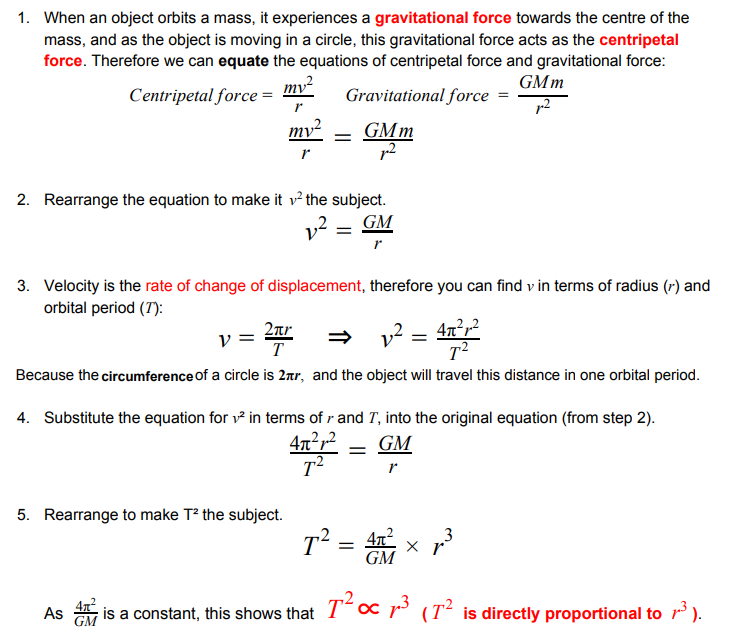gravitation
1/19
There's no tags or description
Looks like no tags are added yet.
Name | Mastery | Learn | Test | Matching | Spaced |
|---|
No study sessions yet.
20 Terms
what does gravity act on
any object which has mass
is gravity repulsive or attractive
always attractive
Newton’s law of gravitation
the magnitude of the gravitational force between two masses is directly proportional to the product of the masses and inversely proportional to the square of the distance between their centres of mass

gravitational field strength
the force per unit mass exerted by a gravitational field on an object
is gravitational field strength constant?
constant in uniform fields
varies in radial fields

when can the equation be used
for radial fields only

gravitational potential
the work done per unit mass against gravitational force to move an object from infinity to a given point
gravitational potential at infinity
0
is gravitational potential positive or negative, and why?
it is always negative
as an object moves from infinity to a point energy is released as GPE is reduced

what is M in the equation
mass of the object causing the field

gravitational potential difference
energy released to move a unit mass between two points

work done when moving an object in a gravitational field, what is m
mass of the object being moved

why is no work done when moving along an equipotential surface
gravitational potential difference is 0
Kepler’s third law derivation (T2 is directly proportional to r3)
completed derivation

total energy of an orbiting satellite
kinetic energy + potential energy
always constant
escape velocity
minimum velocity an object must travel at to escape the gravitational field at the surface of a mass

synchronous orbit
orbital period of the satellite is the same as the rotational period of the object it is orbiting
geostationary satellite
specific geosynchronous orbit (orbital time period = 24hrs)
stays above the same point on earch
directly above equator
use of geostationary orbits
TV + telephone signals
uses of low orbit satellites
weather monitoring, military applications